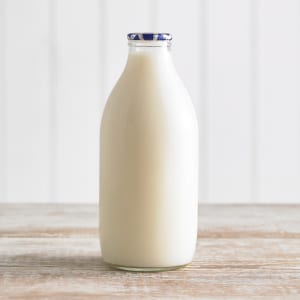Decomposition
Indicator Species
__Indicator species are living organisms that can be used as evidence to assess the level of pollution. __
Air quality
- __Lichens __grow on rocks and tree barks, and they tend to absorb water and nutrients around them.
- They can survive off rainwater.
- Rainwater contains a lot of air pollutants that are naturally dissolved into it.
- Air pollutants normally include __sulfur dioxide __(when certain fossil fuels containing sulfur compounds are burned, it releases sulfur), and it damages lichens. It prevents the lichens from growing.
- You will notice that if there is clean air, the lichens will be bushy.
- If there is a small amount of air pollution, the lichens will be leafy.
- However if there is a lot of pollution, the lichens will appear crusty.
-
If there are no signs of lichens, it will indicate a high level of pollution.
- Blackspot fungus can be found on roses in unpolluted areas. This is because blackspot fungus can be killed by the high levels of sulfur dioxide that is found in polluted air.
Water Pollution
- Many marine animals will not be able to survive if the water is polluted. This may be due to a range of harmful substances that are washed into water.
- The presence or absence of certain species will be a sign as to whether the water is polluted or not.
- polluted water: presence of bloodworm, sludgeworm
- clean water: presence of freshwater shrimps, stonefly
Food Preservation
The rate of decomposition in food preservation can be affected by the temperature, water content __and __oxygen availability.
- High temperature prevents decay as the enzymes and proteins are denatured, and the decomposers are dead
- Low temperature slows down decay as there are lower rates of reaction, rate of growth and reproduction of the decomposers
- Low levels of oxygen reduces the rate of decay as oxygen is vital for the decomposers to respire
- Low levels of water reduces the rate of decay as decomposers require water
Here are the solutions to preserving food so that bacteria and fungi cannot survive:
- Placing food in cans so that bacteria cannot enter
- Cooling the food is that bacteria cannot reproduce
- Freezing the food so that bacteria is unable to reproduce at low temperatures, and do not have water to sustain them
- Drying the food prevents the microorganism from growing or consuming the food
Composting
The rate of decomposition in composting can be affected by the temperature, water content __and __oxygen availability.
- Colder temperatures will affect decomposing organisms so that they are less active
- At extremely high temperatures, decomposers will be killed, therefore decomposition will stop
- Low levels of water will mean that the decomposers cannot survive
- High levels of water will increase the rate of decomposition, as decomposers tend to secrete enzymes onto decaying matters, then it absorbs any dissolved molecules.
- High levels of oxygen will encourage decomposers to survive as they require oxygen to respire and survive.
Decay
It is possible to calculate rate changes in the decay of biological material through the following formula:
This shows how quickly something is able to decay. We can use this formula to calculate the decay of specific substances (e.g. milk).
- We can see the change in pH value of milk when it is spoilt, as spoilt milk becomes acidic.
- What are indicator species?
- Living organisms that can be used as evidence to assess the level of pollution.
- If the water is polluted, what species could be found in the water?
- Your answer should include: bloodworm / sludgeworm
- How does extremely high temperatures affect decomposition?
- Your answer should include: At extremely high temperatures / decomposers will be killed / therefore decomposition will stop

